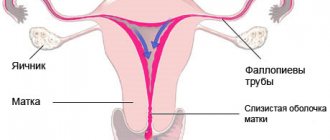The article was checked by an endocrinologist, Ph.D. Mirna S.S. , is for general informational purposes only and does not replace specialist advice. For recommendations on diagnosis and treatment, consultation with a doctor is necessary.
Acromegaly and gigantism are chronic diseases caused by excessive secretion of growth hormone by the pituitary gland.
Acromegaly develops mainly in adults; Gigantism manifests itself already in childhood.
Classification of gigantism
According to modern endocrinological classification, the following types of gigantism are distinguished:
- true gigantism, a characteristic feature of which is a proportional increase in all parts of the body, while the mental and functional development of the body remains normal;
- acromegalic gigantism (signs of acromegaly are added);
- splanchomegaly: with this type of gigantism, there is an increase in the size and mass of internal organs; in some sources, this disease is referred to as “gigantism of internal organs”;
- eunuchoid gigantism, a pathology whose main feature is a decrease in functionality or complete dysfunction of the gonads. Such patients have virtually no secondary sexual characteristics, have disproportionately elongated limbs and open growth zones in the joints;
- partial or partial gigantism is accompanied by an increase in individual parts of the body;
- half gigantism is characterized by an increase in the body on one side;
- cerebral gigantism: associated with an organic disorder of the brain and entails intellectual disorders.
Causes of gigantism
The underlying cause of gigantism is excessive production of somatotropin, which in turn can be provoked by the following pathologies:
- intoxication (increased levels of toxins in the body);
- neoplasms of the adenohypophysis;
- traumatic brain injuries;
- neuroinfections - infectious (bacterial or viral) diseases of the central nervous system, such as encephalitis, meningitis, meningoencephalitis.
In addition to all of the above, the cause of gigantism may be a low level of sensitivity of the receptors of the epiphyseal cartilage (the area of the bone from which it grows in length) to the hormones responsible for sexual development, this provokes the ability of bones to grow (bone growth zones remain open), even after end of puberty (7-13 years).
Symptoms of gigantism
The main symptom of gigantism is a significant increase in body parts. As a rule, the main growth spurt occurs in childhood (10-15 years). Patients experience high growth rates that are unusual for the normal physiological development of the human body. Patients experience subjective complaints of headaches, dizziness, increased fatigue, pain in the bones and joints, and decreased vision. Deterioration of memory and performance leaves its mark on school performance.
Gigantism is accompanied by neuropsychiatric disorders, as well as sexual dysfunctions (infantilism). In men with gigantism, hypogonadism develops, in women - early cessation of menstrual function or amenorrhea, as well as infertility. Other hormonal pathologies that may be symptoms of gigantism include:
- sugar;
- diabetes insipidus;
- hyper-hypothyroidism.
Gigantism is initially manifested by an increase in muscle mass, and then muscle weakness and asthenia occur.
More about symptoms
Signs of gigantism begin to appear in adolescence. Quite often, at the initial stage, parents do not give due importance to their children’s complaints. And the rapid growth is justified by the tallness of close relatives.
Evidence of gigantism may include:
- constant severe weakness;
- daily dizziness;
- chronic headaches;
- memory problems;
- tachycardia.
During puberty, girls may not have periods even at 15-16 years old. Breast development may be slow. Boys over the age of 14 may suffer from hyposexuality (lack of sexual desire). The development of macrogenitalism, expressed in exceeding the norm for the size of the penis, is possible.
In most cases, mental development is impaired. For “giants,” a tendency toward apathy, persecution mania, and preservation of “childishness” despite growing up is considered quite typical.
Condition of organs and body parts
Seeing giant people, one gets the impression that everything internal to such a person is also large. This is true, but not all internal organs increase, despite the high growth of the body. Thus, the most important organ, the heart, does not have time to grow. Due to its insufficient size, the heart cannot cope with its functions, which is fraught with multiple complications.
Gigantism is often accompanied by the following deviations:
- macroglossia (large tongue);
- diastema (increased distance between teeth);
- enlargement of the larynx.
Despite the fact that, except for the heart, all organs are sized according to the patient’s height, they still do not function fully, therefore, with gigantism there are multiple complications.
Diagnosis of gigantism
The diagnosis of gigantism is established based on visualization of clinical manifestations. Such patients are indicated for X-ray examinations, neurological and ophthalmological diagnostics. Laboratory diagnostics are uninformative, as they show only one deviation - an increased level of somatotropin. Patients with suspected such pathology are advised to undergo a computed tomography scan of the brain, because gigantism is often caused by the presence of tumor-like formations in the pituitary gland.
With a growing adenoma (benign tumor) of the pituitary gland, there is an increase in the sella turcica (the area of the skull where the pituitary gland is located). A growing adenoma can limit visual fields (decreased vision). X-ray diagnostics helps to identify a lag in physiological bone growth from the passport one.
If, after skeletal maturation, the production of somatotropin does not stop, acromegaly is formed.
Publications in the media
Acromegaly is a progressive increase in the size of the hands, feet, lower jaw, chest, and internal organs due to excessive secretion of growth hormone. It develops after the completion of ossification of the epiphyseal cartilages. In children (before osteogenesis is completed), pituitary gigantism develops.
Etiology • GH-producing pituitary adenoma •• Often the adenoma causes destruction of the “sella turcica”, which can be detected by radiography of the skull in the lateral projection; in other cases, CT or MRI is used to visualize the tumor; sometimes the tumor is not visualized •• Histology: usually acidophilic adenomas •• Immunocytochemistry: somatotrophic cells • Inherited and familial forms: •• somatotrophinoma (*102200, SMTN gene, 11q13, Â): a combination of acromegaly and gigantism with acanthosis nigricans, galactorrhea • • Rosenthal-Klopfer syndrome (*102100, Â): a combination of acromegaly and gigantism with folded pachyderma (thick folds of the skin of the neck and back of the head) •• Acromegaloid face syndrome (*102150, Â): thickened lips, eyelids, eyebrows and folds of mucous membranes, big “potato” nose •• Mutations of the SMTN gene (11q13): somatotrophinoma and subsequent acromegaly develop •• Sotos syndrome (*117550, sporadic cases): moderate neurological and mental symptoms, accelerated growth with features of acromegaly, high blood levels of valine, leucine and isoleucine •• Gigantism due to excessive secretion of somatoliberin (139190, 20q11.2, GHRF gene, B).
Clinical picture. Excessive secretion of growth hormone causes changes in bones, soft tissues, and affects metabolism • In children and adolescents, excessive secretion of growth hormone stimulates the linear growth of long bones (pituitary gigantism). The growth rate exceeds physiological limits, but it is relatively proportional • The growth of soft tissues and disproportionate increase in bones in adults cause deviations that change the appearance of the patient: enlargement of the hands and feet (especially fingertips), coarsening of facial features, thick skin folds, frontal and nasolabial wrinkles, enlargement of the nose and lower jaw, prognathism, the appearance of spaces between the teeth • Organomegaly (enlargement of the heart, lungs, liver, spleen, kidneys), thickening of the skin and interstitial edema with swelling and hardening of soft tissues • Tunnel syndromes; Carpal tunnel syndrome develops especially often • Osteoarthritis (both peripheral joints and the spine are affected; manifested by crepitus, in the early stages - hypermobility, in the later stages - limitation of movements in the joints) • Muscle damage (proximal muscle weakness, cramps) •• Raynaud's syndrome ( 25%).
Laboratory tests • Decreased glucose tolerance, clinically manifest diabetes is observed in 10% of patients • Hyperphosphatemia is caused by an increase in tubular reabsorption of phosphates (GH effect) • Hypercalciuria • Examination of synovial fluid does not reveal signs of inflammation (leukocyte content <2000 in 1 μl, neutrophils <25% ) • Serum creatine phosphokinase (CPK) is not changed.
Special studies • X-ray of the skull •• increased pneumatization of the paranasal sinuses •• thickening of the cortical layer of the bones of the cranial vault •• “sella turcica”: expansion and deepening of the pituitary fossa • X-ray of the joints •• narrowing of the joint space •• cystic changes in the epiphyses with the formation of osteophytes •• “clump-like appearance” of the distal phalanges •• dashed shadows are traces of calcium pyrophosphate deposition in the joint tissues • X-ray of the spine: expansion of the vertebral bodies, ossification of the spinal ligaments • CT and MRI are the most optimal methods for visualizing pituitary adenoma • Electromyography - without pathology • Ophthalmological examination: narrowing fields of view.
Diagnostic tactics. The diagnosis is determined by clinical manifestations. Changes in the content of GH and/or somatomedin C in the blood confirm the diagnosis • GH content is determined in the morning (in bed) •• A level above 10 ng/ml indicates acromegaly •• In healthy people, 1-2 hours after taking 100 g of glucose, the GH content becomes less than 5 ng/ml. This does not happen in patients with acromegaly, but a paradoxical increase in GH is possible. If basal GH levels are significantly elevated (eg, more than 30–50 ng/ml), as is often observed in acromegaly, the dextrose GH suppression test is not performed • Somatomedin C. Levels are often elevated in acromegaly patients with normal or borderline GH levels.
TREATMENT • Transsphenoidal resection of the adenoma • Various types of external irradiation - x-ray therapy, telegammatherapy of the hypothalamic-pituitary region, irradiation of the pituitary gland with a proton beam - very slowly reduce the level of growth hormone; there may be no effect within 3-10 years from the start of treatment, and in some cases, normalization does not occur at all • Large doses of estrogens (isolated or in combination with androgens) reduce the secretion of GH • Bromocriptine in an initial dose of 2.5 mg 4 times / day before meals with a gradual increase (average daily dose 20-30 mg) - for galactorrhea, as preoperative preparation and after radiation therapy • Octreotide 0.05-1 mg s.c. 2-3 times a day - in the absence of effect or impossibility of carrying out surgery, radiation therapy or the use of bromocriptine • In the future - long-acting somatostatin preparations • NSAIDs - for joint damage.
ICD-10 • E22.0 Acromegaly and pituitary gigantism
Treatment of gigantism
The treatment strategy for gigantism is similar to the treatment for acromegaly. Basically, treatment regimens depend on the form of gigantism.
The basic principles of treating gigantism in modern conditions are a combination of hormonal drugs and radiotherapy; as a rule, such measures give a positive result.
To normalize the level of growth hormone in this pathology, sex hormones are used to close growth zones and somatotropin analogues.
Often, treatment of gigantism is aimed at eliminating etiological factors (removal of pituitary adenomas, radiation treatment in combination with drug therapy with dopamine antagonists).
With the eunuch form of gigantism, a set of therapeutic measures will be aimed at inhibiting further growth of the skeleton, accelerating its ossification and eliminating infantilism.
In case of partial gigantism, in addition to the main treatment, it is necessary to take a set of measures aimed at orthopedic correction through plastic surgery.
Forecast and prevention of gigantism
With adequate and appropriate treatment, this disease has a relatively favorable prognosis. But the life expectancy of patients is significantly shortened due to the development of intercurrent pathologies (diseases that complicate the course of other diseases), which are the main causes of death in people with gigantism. The majority of patients suffer from infertility and have a very low level of ability to work.
Unfortunately, there is not yet a set of measures to prevent gigantism. Parental attention to the development of the child during puberty is very important. If the slightest symptoms appear, you should immediately seek specialized medical help. Timely diagnosis and treatment will help prevent the development of complications.
Consequences
Even if the parents are tall, gigantism is considered not the norm, but an abnormal pathology in which the body cannot fully function. The patient gradually develops more and more complications, which further provoke concomitant diseases.
Lack of treatment or its insufficient effectiveness can lead to the following consequences:
- chronic sinusitis, which impairs breathing and deforms the muscle tissue on the face (formation of folds due to constant breathing through the mouth);
- impaired sweating, leading to cystic formation of sebaceous glands and polyps;
- skin hyperpigmentation, hypertrichosis and acanthosis;
- kyphoscoliosis, characterized by curvature of the spine due to unnatural growth;
- euthyroid or toxic goiter, autoimmune thyroiditis;
- obvious or hidden type of diabetes;
- hyperprolactinemia (increased prolactin levels);
- secondary hypogonadism (insufficiency of internal genital organs, such as testicles in women);
- sexual disorders (decreased libido, lack of erection, etc.);
- dystrophy of myocardial muscles;
- chronic increase in blood pressure;
- loss of vision, hearing;
- transition of the tumor (if present on the pituitary gland) into a malignant form.
In most cases, “giants” do not live to old age, since complications constantly progress, gradually inhibiting the functioning of organs, which ultimately leads to death.










